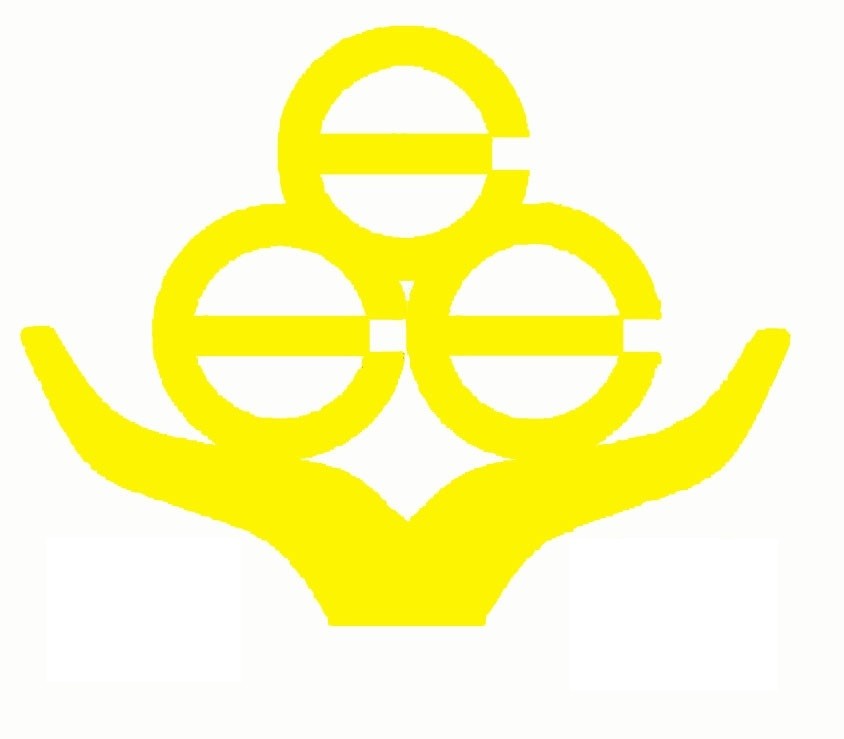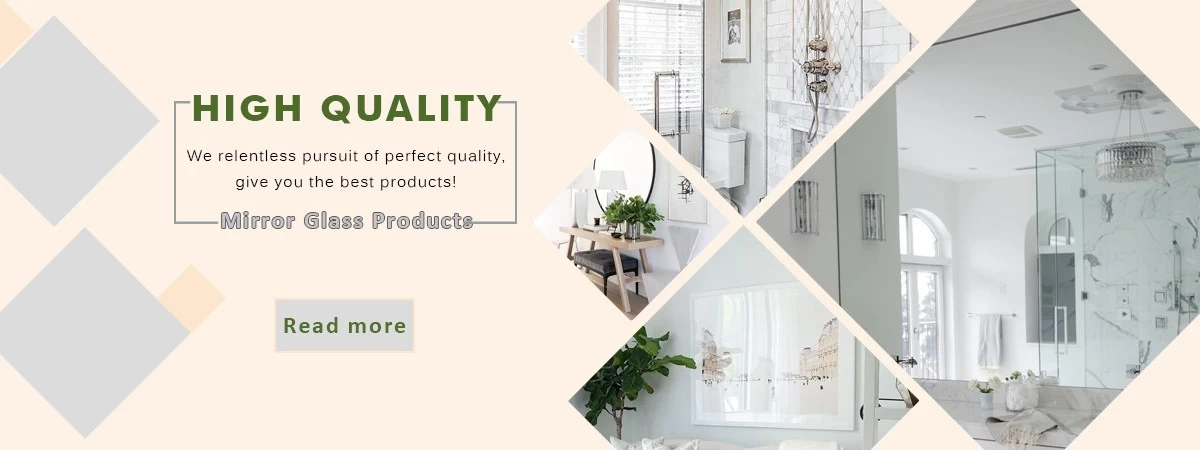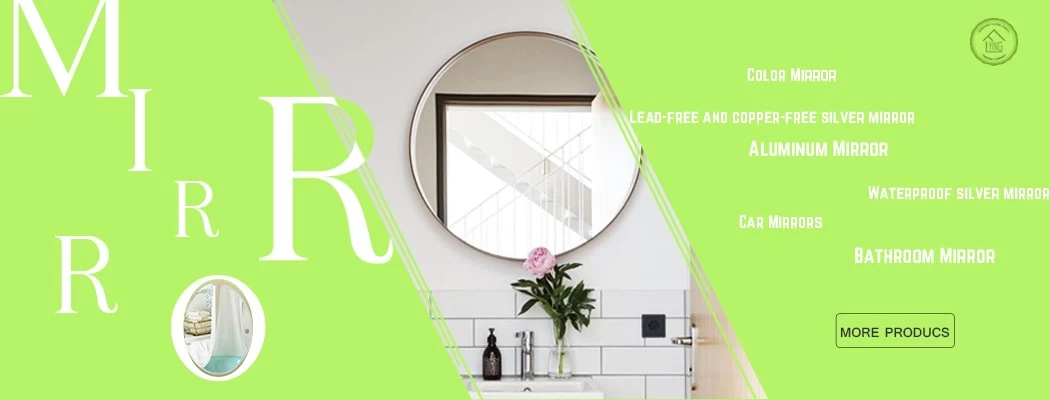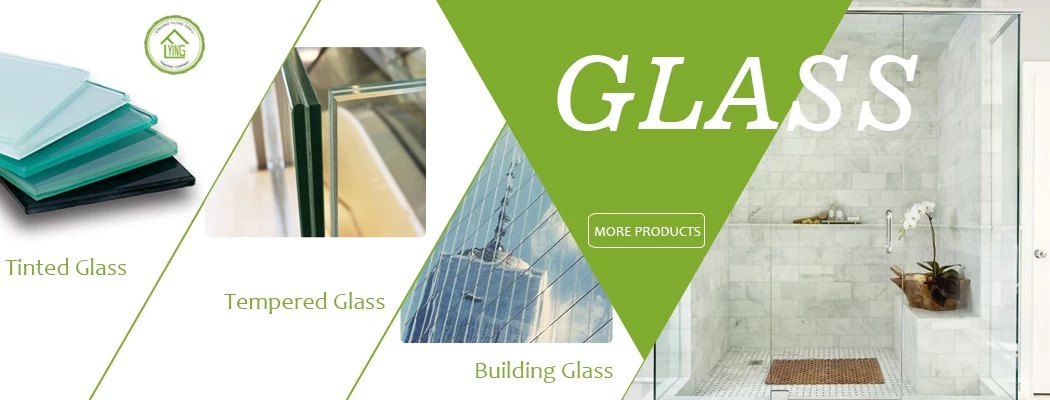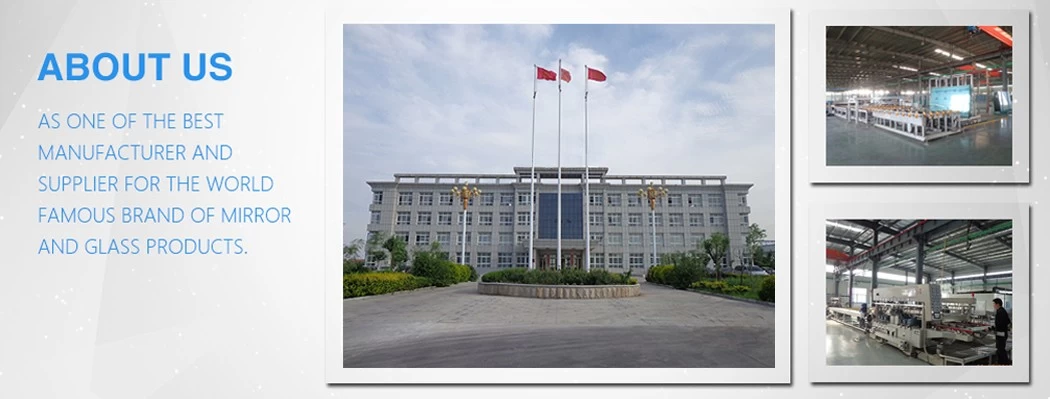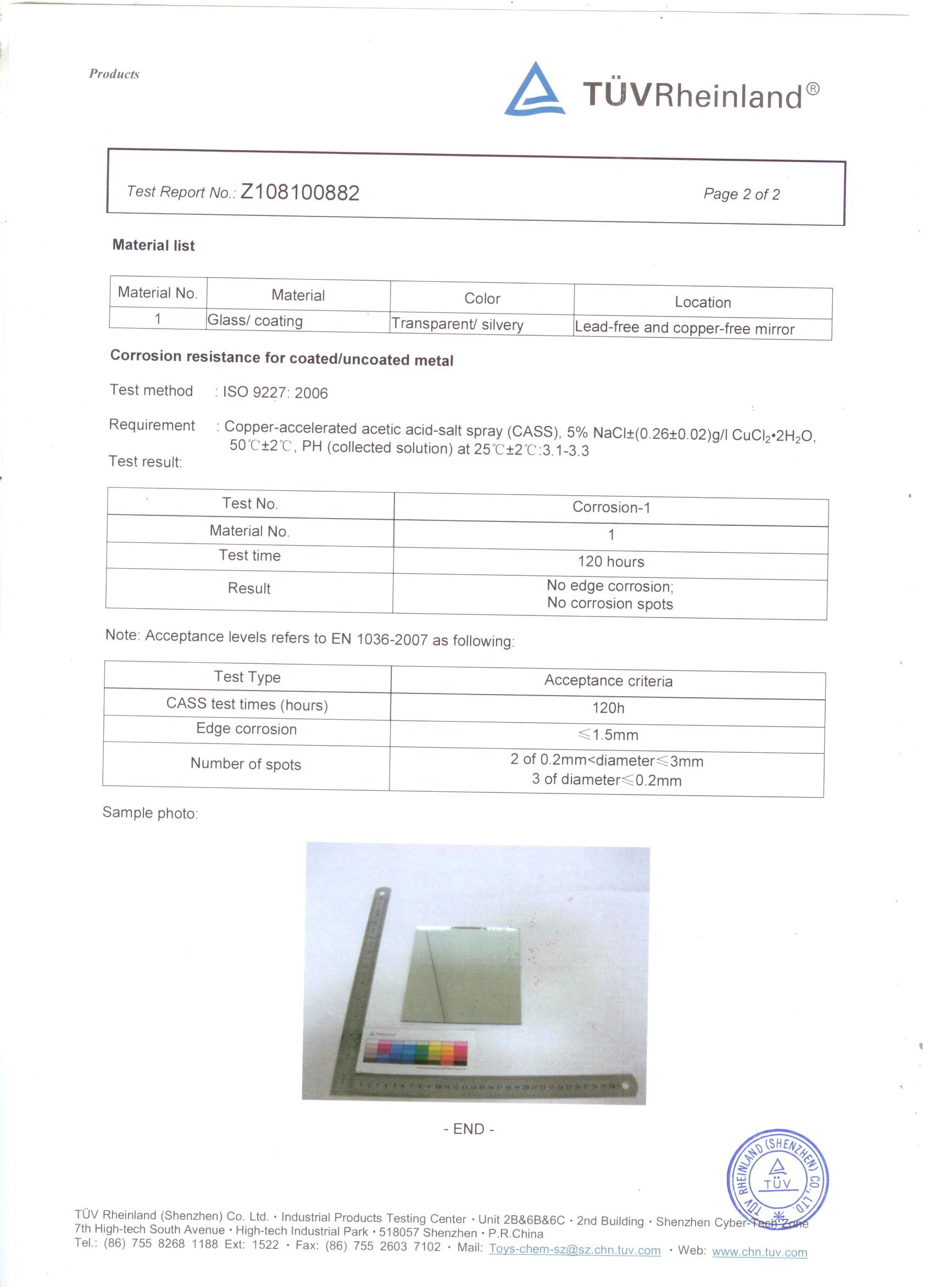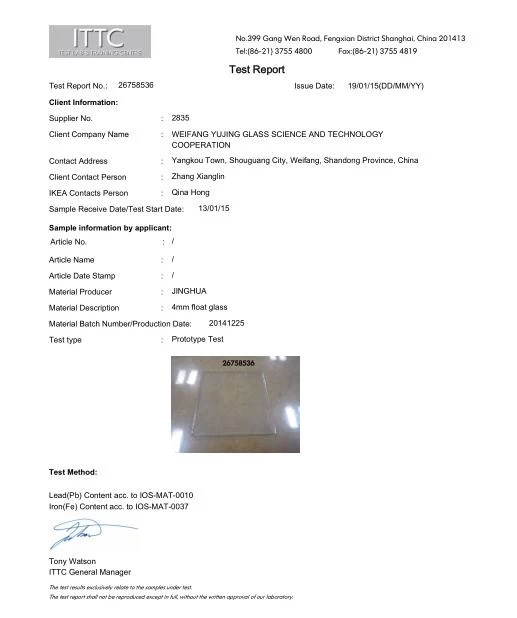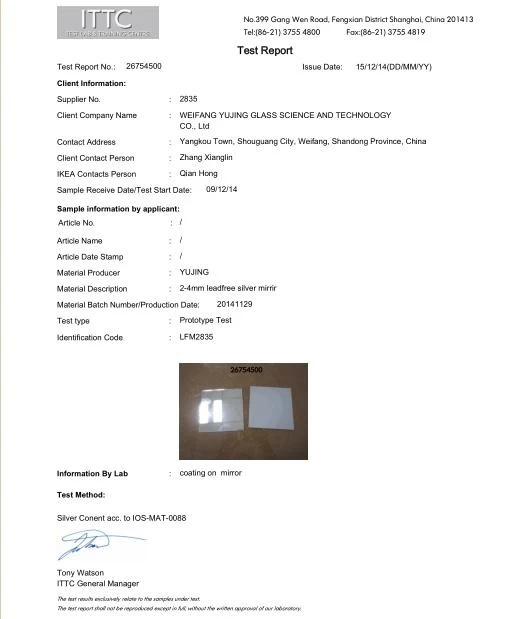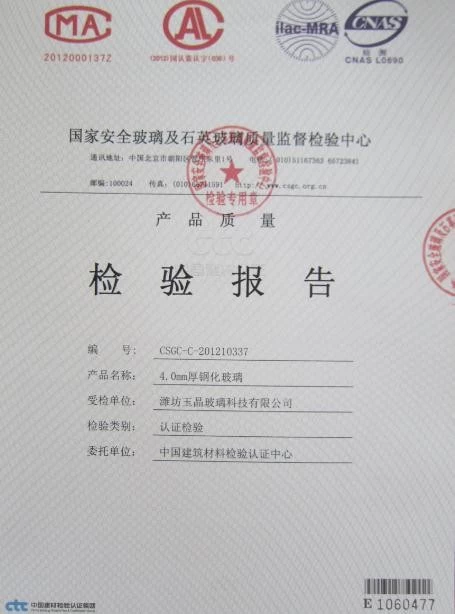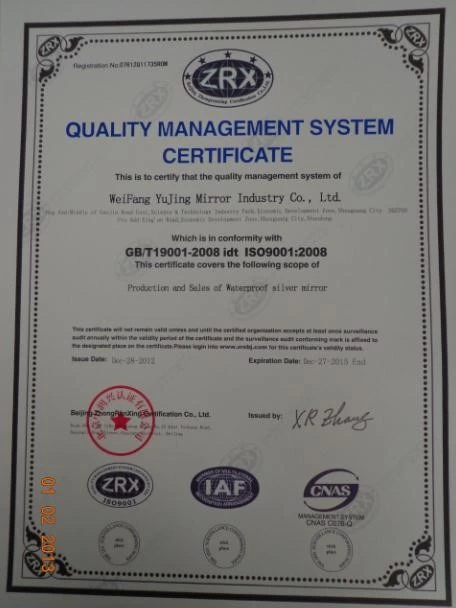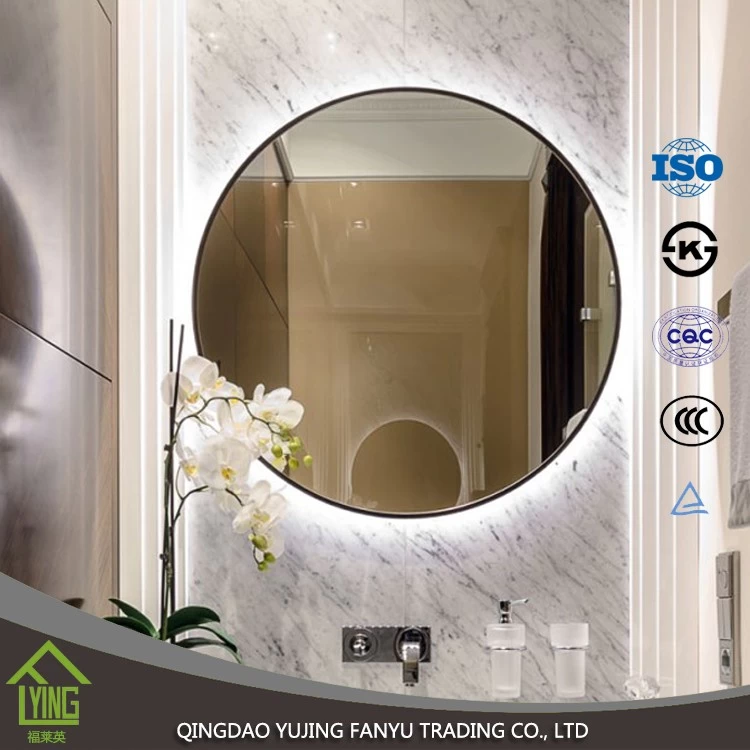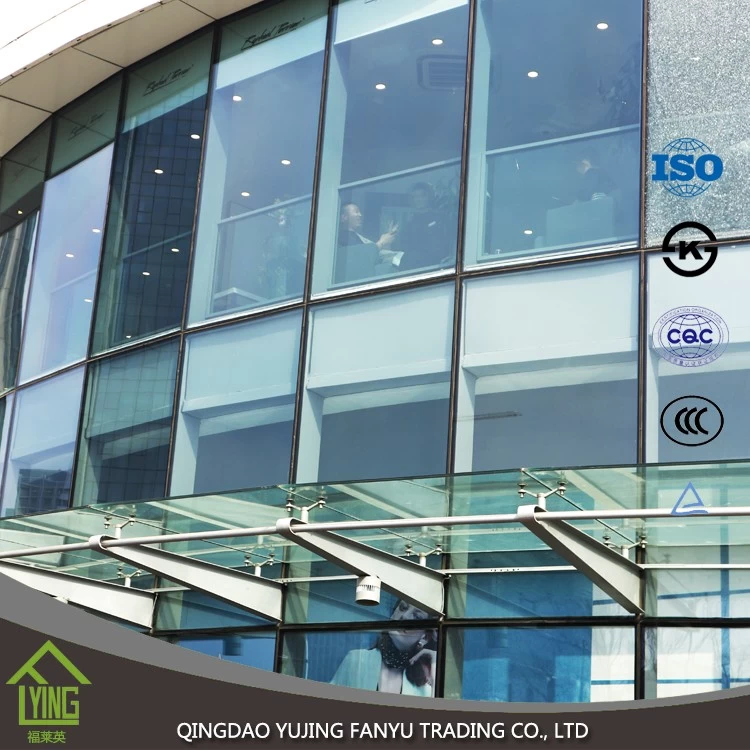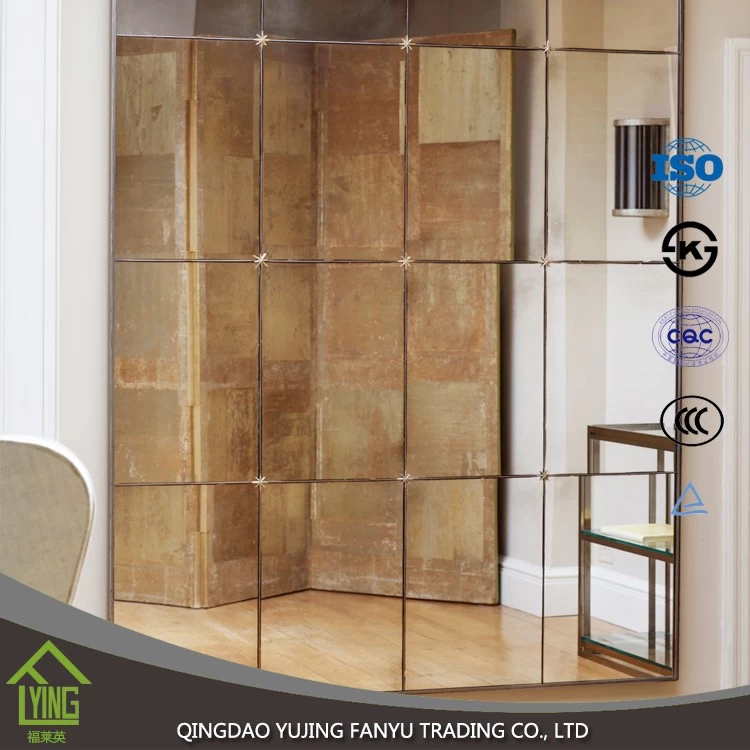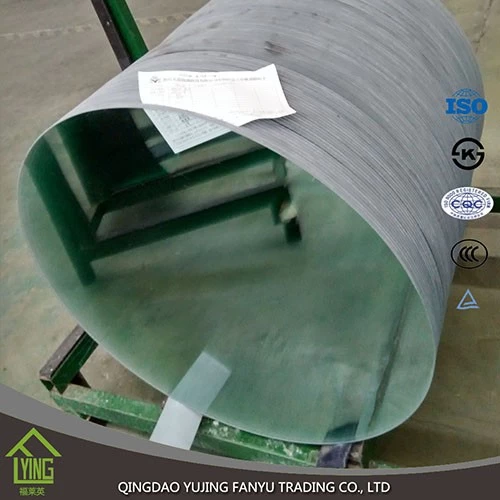Smart Glass Development in China
Fanyu
Chinamirrormanufacturer.com
2018-04-09 11:02:28
Invented by the West invented air blowing method in the seventh century ADplate glassGlass began to be used on church doors and windows. In the Qing Dynasty after 1000 years, flat glass windows were introduced into China. During the Yongzheng years, the price was as high as 15 lines and two silver/square meters, and half of houses could be bought in Beijing. Glass has brought sunshine to the dark room. This once-expensive item has now approached ordinary people and has become a must-have for home-improvement. Today, flat glass has formed a huge industry. According to 2015 statistics from the National Bureau of Statistics, the usage of domestic residential glass windows and glass curtain walls are both 200 million square meters.
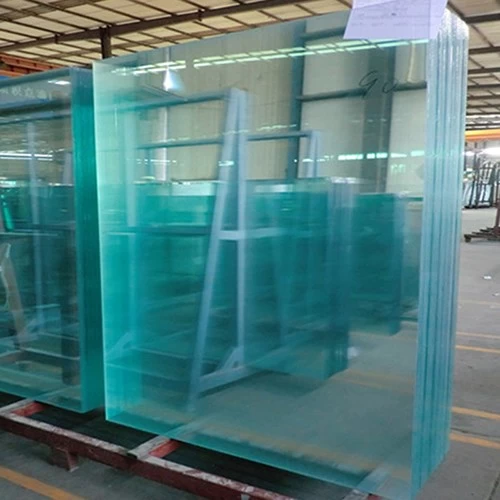 Glass has excellent light transmission and can provide a wide field of vision, but it also allows solar heat into the room, causing a huge energy waste. In order to reduce direct sunlight, people generally adopt the traditional way of internal/exterior shading. Internal shading, such as curtains of various materials, only blocks the sunlight that has entered the room through the windows. Since the energy has entered the interior, the energy saving effect is limited. External shading devices, especially electric sunshades, are more energy-efficient than internal shading, but most external shading products are difficult to avoid drawbacks of poor reliability, short life, and difficult cleaning. Moreover, this approach affects the concise beauty that the building itself should have, and it also limits the user's field of vision. The In addition to the traditional mechanical sunshade, an emerging electronic sunshade glass product is entering the market. The combination of glass materials and new technologies in the field of electronic control can realize the intelligentization of shade, privacy and energy saving on glass. This black technology represents the future direction of glass development, and can be applied in the fields of smart buildings and smart cars to achieve the effects of smart sunshades and smart privacy. In the field of construction, smart glass can replace the external shading, while providing a wide field of vision, energy-saving effects and technological aesthetics. Smart cars equipped with smart glass will have better privacy and energy-saving effects. With microcircuits, they will also be able to implement alarms and other safety features. At present, some high-end Mercedes-Benz models have been equipped with smart glass. The According to the way of function realization, smart glass can be divided into passive and active type. Passive smart glass mainly includes thermochromism and photochromism. The typical representative of this material is vanadium pentoxide material, and its crystal structure changes from monoclinic to rutile tetragonal at a certain temperature, and the optical properties change accordingly. The advantage of passive smart glass is that it does not require external power supply to drive and it is simple and convenient to install. The disadvantage is that the difference in transmittance before and after discoloration is small, and the temperature range required for discoloration is wide, so it is prone to normal discoloration in summer but not in winter. Obvious problem. The Compared with passive smart glass, active smart glass can realize active control as it is combined with electronic electronic control technology. It can be combined with concepts such as the Internet of Things and light and heat sensors to realize autonomous intelligent control. Although it is difficult to avoid the cumbersome circuit installation, active smart glass has more intelligence, energy saving and change effects. The Active smart glass mainly includes three technologies: polymer dispersed liquid crystal (PDLC), suspended particle (SPD), and electrochromic (EC). PDLC is liquid crystals dispersed in an organic solid polymer matrix in micrometer-sized droplets. Since the optical axes of small droplets composed of liquid crystal molecules are freely oriented, the refractive index does not match the refractive index of the matrix when the light passes through the matrix. The droplets are strongly scattered to give an opaque milky or translucent state. Applying an alternating electric field can adjust the orientation of the optical axis of the liquid crystal droplets, and when the matrix and the refractive index of the droplets match, a transparent state appears. In addition to the electric field, the liquid crystal droplets resume their initial astigmatism, thereby realizing dimming. PDLC products are mainly used in indoor privacy walls. At present, there are about 20 PDLC membrane production and sales companies in China. The The working principle of the SPD technology is as follows. Particles having an orientation light absorption property are dispersed in a suspension, and Brownian motion particles are randomly arranged to absorb more than 99% of visible light upon power-off. When an AC voltage of 110 V is applied to the SPD film, the particles are aligned by the electric field and the light is transmitted. The Electrochromic (EC) technology, here refers to the all-solid-state electrochromic technology that has been industrialized. The glass substrate is coated with a plurality of sandwich functional layers, and an electrochromic layer, an ion conductor (IC) layer and an ion storage layer are sandwiched between upper and lower conductive layers. Taking tungsten trioxide, which is an electrochromic material commonly used in foreign markets, as an example, in the transparent state, the discoloration layer of tungsten trioxide is a hollow cubic structure in which only a small amount of visible and infrared light is absorbed. Under the driving of +3V DC low voltage, lithium ions enter the crystal lattice of tungsten trioxide, forming a solid cubic structure. Under this structure, EC glass can absorb more than 98% of visible light and more than 99% of infrared light, which can achieve the adjustment of visible and infrared light. By changing the direction of the applied voltage, lithium ions can be reversibly doped or dedoped, thereby achieving a cycle of color fading of the EC film.The For these three technologies, we compare the three important features of smart glass: dimming, thermal insulation, and privacy. PDLC has only transparent and scattering states and no intermediate states, while SPD and EC are continuously adjustable between transparent and colored states. PDLC relies on the difference in refractive index between the droplet and the substrate to scatter light, so it can completely block the line of sight and has a good privacy protection effect, but it can not effectively block the scattering of infrared and visible light through the glass into the room, so its thermal insulation effect is very limited. SPD's products on the domestic market are few. We consult the scientific literature to understand its optical parameters. In the colored state, the visible and infrared transmittances are 0.7% and 27.4%, respectively, and in the transparent state, they are 65% and 77.6 respectively. %. EC can block most of the visible and infrared light under the condition of coloring, so it has strong shading performance in this state; in the transparent state, 60~70% of visible light and 30~40% of infrared light can be transmitted. The EC glass enters the room and is suitable for daylighting and solar heating. SPD and EC technology have a good thermal insulation effect. Although most of the visible light is blocked, because of the highly sensitive eyes, a few percent of visible light cannot completely block the line of sight. Therefore, in some occasions, such as the night from the outside through the SPD or EC window to look indoors, you can still see indoor fuzzy images, so its privacy function is limited. |
